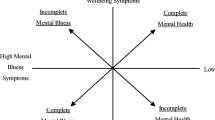Abstract
Children who enter foster care are removed from their homes, their families, and everything else that is familiar. They are then placed with strangers. Once protective services are initiated, separation from biological parents is likely to further traumatize these children, even if they had previously been neglected and/or abused. As a result, foster children experience trauma on multiple levels. Trauma experiences are often enacted behaviorally in ways that disrupt the children's capacity to learn as well as their peer relationships at school. Accordingly, it seems logical to provide school based services that address specific manifestations of trauma related behavior.
Robert Pynoos has developed a model for work with children who have experienced trauma. The model includes individual and group counseling, a mentor for the children and group counseling for the parents. This paper discusses an adaptation of the model's school based group component, specifically designed to address the emotional, social and by implication, the educational needs of children who were currently, or had recently lived in out-of-home foster placements. The group was conducted in an inner city elementary school with a large enrollment of at-risk children.
Similar content being viewed by others
REFERENCES
Ainsworth, M. D. S., Blehar, M. C., Waters, E., & Wall, S. (1978). Patterns of attachment: Apsychological study of the stranger situation. Hillsdale, NJ: Erlbaum.
Bowlby J. MD (1982). Attachment andloss: Retrospect and prospect. American Journal of Orthopsychiatry: 52(4), 664–667.
Davies, D. (1999).Child development: A practitioner's guide. N.Y., NY: The Guilford Press.
Everett, J. E. (1995). Child fostercare. In Encyclopedia of Social Work (Vol. 1, pp. 375–389). Washington, CD: NASW Press.
Fashel, D. & Shinn, E. B. (1978). Children in foster care: A longitudinal investigation. N.Y., NY: Columbia University Press.
Heath, A., Colton, M., & Aldgate, J. (1989). The educational progress of children in and out of care. British Journal ofSocial Work: 19, 447–460.
James, B. (1989). Treating traumatized children: New insights and creativeinterventions. Lexington, MA: Lexington Books.
Jonson-Reid, M., Barth, R. P. (2000). From placement to prison:The path to adolescent incarceration from the child welfare supervised foster care or group care. Children and Youth Services Review: 22(7), 493–516.
Murphy, L., Pynoos, R. S., James, C. B. (1997) The trauma/grief-focused grouppsychotherapy module of an elementary school-based violence prevention/intervention program. In. Osofsky, J. D. (Ed.), et. al. (1997). Children in a Violent Society (pp. 223–255) New York, NY, Guilford Press.
Owusu-Bempah, J. & Howitt, D. (1997). Socio-genealogical connectedness, attachment theory, and childcare practice. Child and Family Social Work: 2, 199–207.
Penzerro, R. M., Lein, L. (1995). Burning their bridges: Disordered attachment and foster caredischarge. Child Welfare: 72(2), 351–365.
Rosenfeld, A. A., Pilowshy, D. J., Fine, P., Thorpe, M., Fein, E., Simms, M. D., Halfon, N., Irwin, M., Alfaro, J., Saletsky, R., & Nickman, S. (1997). Foster care: An update. Journal of the American Academy of Child and Adolescent Psychiatry: 36(4), 448–457.
Sable, P. (1995). Attachmenttheory and social work education. Journal of Teaching in Social Work: 12, 19–38.
U.S. Department of Health andHuman Services, Administration for Children and Families, Administration on Children, Youth, and Families, Children's Bureau. (2000). The AFCARS Report [On-line]. Available: www.acf.dhhs.gov/programs/cb.
Van Ijzendooen, M. H., Feldbrugge, J. T. T. M., Derks, F. C. H., de Ruiter, C., Verhagen, M. F. M., Philipse, M. W. G., van der Staak, C. P. F., Riksen-Walraven, J. M. A. (1997). Attachment representations of personality-disordered criminal offenders. American Journal of Orthopsychiatry: 67(3), 449–459.
Author information
Authors and Affiliations
Rights and permissions
About this article
Cite this article
Williams, S.C., Fanolis, V. & Schamess, G. Adapting the Pynoos School Based Group Therapy Model for Use with Foster Children: Theoretical and Process Considerations. Journal of Child and Adolescent Group Therapy 11, 57–76 (2001). https://doi.org/10.1023/A:1014741714232
Issue Date:
DOI: https://doi.org/10.1023/A:1014741714232




